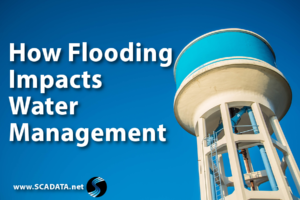Water management is no easy job. Dealing with waste and water treatment is an extremely important part of keeping our water clean and drinkable. But, an often overlooked part of water management deals with stormwater. Stormwater is any precipitation and runoff that occurs as a result of rain or melting snow. Sure, average people are faced with stormwater when excessive rains occur and flooding makes driving your normal route difficult, but few people realize the constant challenges cities face.
The challenges of stormwater management
Stormwater management is not only an issue when heavy rains occur or during the spring snow melt. Stormwater must be dealt with on a continual basis. As rains and other precipitation occurs, it flows over the land�s surface. The water also runs over dirt-covered streets and roadways full of debris and� vehicle chemicals. Stromwater eventually makes its way to our lakes and streams. The problem is that once it gets there, it is now polluted with whatever it has picked up along the way. Stormwater frequently contains the following:
- Natural debris and sediment
- Nitrogen
- Phosphorus
- Contagions and bacteria
- Oil, grease, and other common chemicals used in vehicles
- Trash
- Pesticides and other agricultural chemicals
- Metals
This stormwater mingles with the water in our streams and lakes. By the time it makes it there, it has become polluted with these chemicals and other dangerous elements.
The EPA and stormwater
The problems presented by stormwater are so prominent that the EPA has regulations ensuring that stormwater is properly managed to reduce the harm to our environment and water supply. According to the EPA, �Urban stormwater continues to be a significant source of water pollution and public health concern.� As a result, the EPA decided to develop a stormwater guide in 2016 to assist cities with their implementation of long-term stormwater management practices. The EPA recommends that communities embrace innovative technology as part of their plan:
�Innovative technologies, including green infrastructure, are important tools that can generate many benefits ranging from improved air and water quality to cost savings to more community amenities.�
SCADA is just the innovative technology necessary for the job.
How SCADA can help with stormwater management
The guide developed by the EPA suggests that communities implement practices that do the following:
- �Track metrics using modeling and monitoring results and costs to measure the success of human health and water quality objectives and the effectiveness of controls.
- Evaluate the performance of site-specific and large-scale green infrastructure and other innovative measures to inform adaptive design and management. Include identification of barriers to full implementation.
- Track cost savings gained due to long-term planning efforts.�
SCADA can be used to achieve all three of these objectives. SCADA is specifically designed to track and analyze data. This technology can provide the metrics necessary to determine water quality and can be applied to human health issues. In addition, using the data analysis features, you can determine site-specific needs and work toward improving efficiency. Using the data you gather, SCADA is a first step towards determining cost savings.
Check out our post for more information on preparing your utility for flooding.




